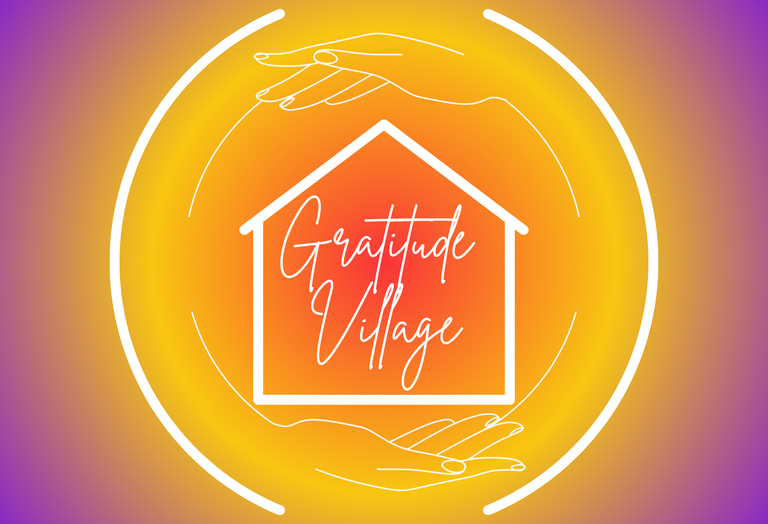Join our next Info Session December 16 from 5:30-6:30 MST Via Zoom (register for link)
Net Zero Living: A Sustainable Path to the Future
This blog defines Net Zero Living, discusses some of the benefits of Net Zero Living and gives a few suggestions on how to achieve Net Zero.
Gratitude Village
9/25/20243 min read


As concerns about climate change, resource depletion, and environmental degradation grow, the concept of "Net Zero Living" has gained significant attention. Net Zero Living represents a lifestyle and design philosophy that aims to reduce an individual's or community's carbon footprint to zero, promoting sustainable living practices that balance the energy we consume with the energy we produce. This approach not only benefits the environment but also enhances our quality of life by fostering healthier, more resilient communities.
What is Net Zero Living?
Net Zero Living involves creating homes, buildings, and communities that produce as much energy as they consume over a specific period, typically a year. This balance is achieved through energy-efficient design, renewable energy production, and sustainable practices. The goal is to eliminate reliance on non-renewable energy sources, reduce greenhouse gas emissions, and minimize waste.
Key components of Net Zero Living include:
Energy Efficiency: Reducing energy consumption is the first step toward Net Zero. This involves using high-performance insulation, energy-efficient windows, and advanced heating and cooling systems. Additionally, appliances, lighting, and electronics should be chosen for their low energy usage.
Renewable Energy Production: Once energy consumption is minimized, the next step is to generate clean energy, typically through solar panels, wind turbines, or geothermal systems. The idea is to produce enough renewable energy to offset the energy consumed by the building or community.
Sustainable Water and Waste Management: Net Zero Living also involves efficient water use and waste reduction. Rainwater harvesting, greywater recycling, and composting are examples of practices that contribute to a Net Zero lifestyle.
Sustainable Transportation: To achieve true Net Zero Living, transportation must also be considered. This includes using electric vehicles, biking, walking, and using public transportation, all powered by renewable energy sources.
The Benefits of Net Zero Living
Net Zero Living offers numerous benefits for individuals, communities, and the planet. Here are some of the most compelling reasons to embrace this lifestyle:
Environmental Impact: By reducing carbon emissions and reliance on fossil fuels, Net Zero Living helps mitigate climate change. This contributes to a healthier planet for future generations, preserving ecosystems and reducing the negative impacts of global warming.
Lower Energy Costs: While the initial investment in energy-efficient technologies and renewable energy systems can be significant, the long-term savings are substantial. Net Zero homes and buildings generate their own energy, resulting in lower utility bills and, in some cases, even generating income by selling excess energy back to the grid.
Improved Quality of Life: Net Zero homes are designed to be comfortable, healthy, and resilient. Improved indoor air quality, natural lighting, and temperature control contribute to a healthier living environment. Furthermore, Net Zero communities often emphasize green spaces, walkability, and local food production, fostering a stronger sense of community and well-being.
Energy Independence: Net Zero Living reduces dependence on external energy sources, making homes and communities more resilient to energy price fluctuations and supply disruptions. This energy independence is particularly valuable in the face of natural disasters and other emergencies.
How to Achieve Net Zero Living
Achieving Net Zero Living requires a combination of thoughtful design, technology, and lifestyle changes. Here are some steps to help individuals and communities transition to a Net Zero lifestyle:
Energy-Efficient Home Design: Building or retrofitting homes with energy-efficient features is crucial. This includes high-quality insulation, energy-efficient windows, LED lighting, and advanced heating and cooling systems. Passive solar design, which maximizes natural light and heat, can also play a significant role.
Renewable Energy Installation: Installing solar panels, wind turbines, or geothermal systems allows you to generate clean, renewable energy. The size and type of the system depend on the energy needs of the household or community and the local climate.
Water Conservation and Waste Reduction: Implementing water-saving fixtures, rainwater harvesting systems, and greywater recycling helps conserve water. Composting organic waste and recycling materials reduce the amount of waste sent to landfills, further minimizing the environmental impact.
Sustainable Lifestyle Choices: Transitioning to Net Zero Living also involves adopting sustainable habits. This can include reducing meat consumption, supporting local food producers, using public transportation or electric vehicles, and minimizing single-use plastics.
Community Collaboration: Net Zero Living is often most effective when embraced at a community level. Cohousing communities, for example, can share resources like renewable energy systems, gardens, and transportation options, making it easier and more cost-effective to achieve Net Zero goals.
The Future of Net Zero Living
As awareness of environmental issues grows, the adoption of Net Zero Living is accelerating. Governments, businesses, and individuals are increasingly recognizing the importance of transitioning to a more sustainable way of life. Innovations in renewable energy technologies, sustainable building practices, and community planning are making Net Zero Living more accessible and affordable.
Net Zero Living is not just an environmental imperative; it's a blueprint for a healthier, more resilient, and more prosperous future. By reimagining how we live, work, and interact with the world around us, we can create a legacy of sustainability that benefits both people and the planet, and that is what Gratitude Village aims to accomplish!
COMMUNITY
Join us in embracing nature, diversity and connection.
Sustainability
DIVERSITY
info@gratitudevillageco.com
720-689-4821
© 2025. All rights reserved.
AFFORDABILITY
Gratitude Village Inc. is a 501(c)3 charitable corporation that values diversity, equity, and inclusion as essential to our mission
Subscribe to our Substack
Refund Policy




Gratitude Village is a Proud Member of these organizations
